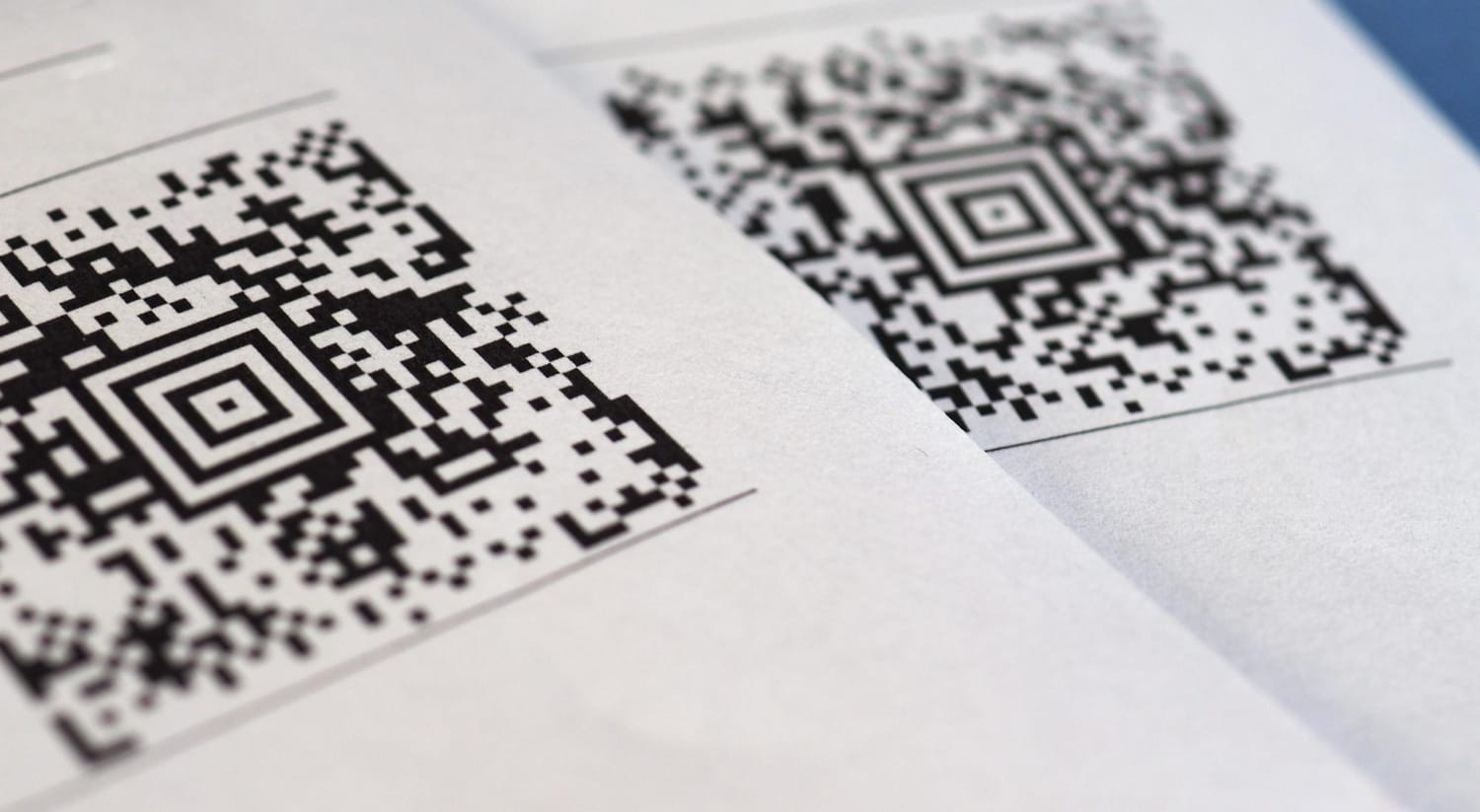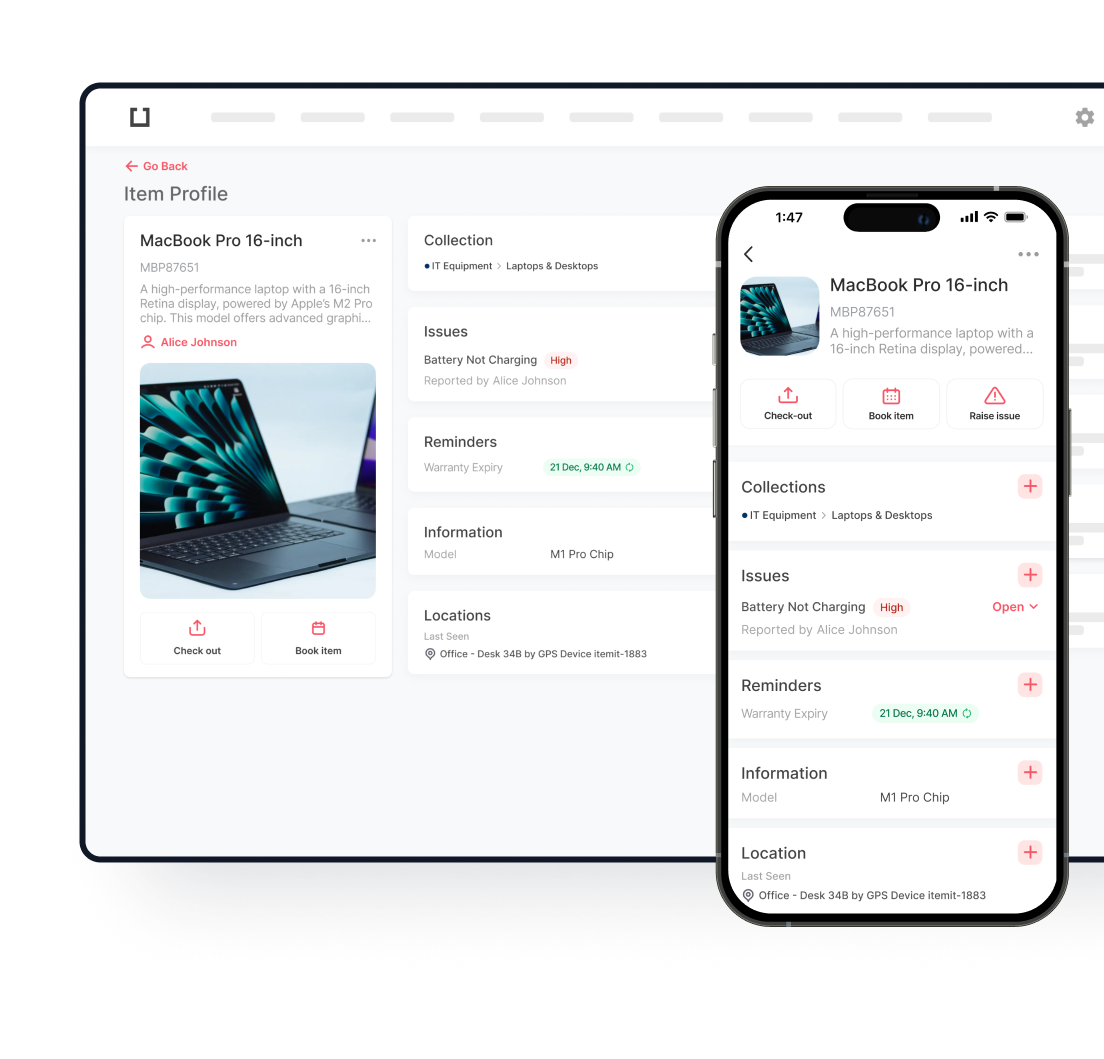
Understanding the Limitations of QR Codes
Storage Capability
Security
Durability
Finally, QR codes require physical access for scanning, which means they aren’t suitable for real-time tracking of assets in transit. If you need to monitor assets remotely or require immediate notifications for their location, then a QR code alternative for more data solutions could serve you better.
For a more comprehensive and detailed look at QR codes, you can use our guide to QR tags.
Why Consider a QR Code Alternative?
First and foremost, enhanced security is a significant benefit. Unlike QR codes, technologies like RFID and NFC offer encrypted data transmission, which helps protect sensitive information. This is essential for industries like healthcare, where patient or equipment data needs to be kept confidential.
Another advantage is greater data storage and flexibility. Certain alternatives, such as BLE (Bluetooth Low Energy) beacons, enable continuous asset monitoring, providing detailed reports and data histories. They allow for more sophisticated data handling compared to the relatively simple format of QR codes.
Hands-free and remote capabilities are also key benefits. With QR codes, you must physically scan each code, which isn’t always feasible if your assets are scattered over a large area or in restricted locations. Alternatives like RFID and GPS allow for real-time and remote data collection, saving time and increasing accuracy.
Additionally, an alternative for QR code tracking, like GPS, can help companies track assets while in transit, providing live location updates. If your business involves logistics or frequent movement of assets, then a system that offers dynamic location capabilities is invaluable.
Top QR Code Alternatives for Asset Tracking
I. NFC Tags
- Strengths: NFC tags are compact, easy to use, and can be embedded directly into products or equipment. They offer better data security compared to QR codes and don’t require line-of-sight scanning, which is ideal for assets in crowded storage or difficult-to-reach locations.
- Weaknesses: NFC tags require close proximity (a few centimetres) for scanning, which might limit their use in scenarios where remote or large-scale monitoring is needed.
NFC tags are perfect for asset management in office settings or retail, where items are frequently moved but stay within a limited range. For example, tracking IT equipment like laptops, tablets, and other devices within an office building can be streamlined using NFC.

II. RFID Tags
- Strengths: RFID tags can be read from several feet away, enabling the quick scanning of several items at once. Because of this, they are ideal in a warehouse environment or for inventory management when you want to track several assets at speed. They also provide encrypted data for added security.
- Weaknesses: The initial setup costs of an RFID system can be higher, especially for big-scale applications, and may require additional RFID readers, adding to overall costs.
RFID tags are perfect for large-scale warehouse and industrial applications. Imagine being at a distribution center and tracking pallets, or being at a manufacturing plant and managing its inventory; because RFID is able to read multiple tags at once, it is especially powerful in high-volume operations.

III. BLE (Bluetooth Low Energy) Beacons
- Strengths: BLE beacons can constantly be broadcast to all the devices within their range. That makes this technology particularly apt for asset tracking in location-based conditions. Their ability to track the temperature, humidity, or even movement of assets will be beneficial for industries such as healthcare or logistics.
- Weaknesses: BLE beacons have a limited range, typically up to 70 meters, and need powered devices to receive the signal. The other concern can be the battery management while such beacons require power to transmit the data.
BLE beacons are best suited for tracking assets within a facility, such as tracking hospital equipment, high-value machinery, or even monitoring temperature and humidity in sensitive areas such as cold storage rooms.

IV. GPS Trackers
- Strengths: GPS trackers are ideal for the tracking of assets in transit because they provide very accurate and timely updates. When it comes to logistics, construction, or generally industries that move big equipment, nothing outshines GPS.
- Weaknesses: GPS trackers rely on satellite signals, which can be very poor indoors or underground. They may also be quite expensive, especially for those that require a continuous connection in actual usage environments.
For logistics, construction, and transportation industries, GPS trackers are ideal. For instance, a company transporting expensive machinery across the country can use GPS and be sure of real-time tracking to prevent loss or theft.

When to Choose a QR Code Alternative
- Asset Type: If you’re tracking high-value equipment that needs enhanced security, RFID or NFC might be a better choice compared to standard QR codes. For assets in transit, GPS trackers are more effective.
If you work in logistics, for instance, a GPS tracker would enable you to monitor priceless goods closely. Conversely, NFC tags match well for greater data security and usability if you manage an office and have to track IT equipment. - Data Requirements: When your assets require detailed information storage, like maintenance history, sensors, or tracking conditions (e.g., temperature), then BLE beacons might be the best fit. They can collect multiple data points beyond just identification.
BLE beacons are highly valuable for monitoring environments like storage facilities that need regular condition checks—tracking the temperature and humidity for sensitive goods. - Tracking Needs: For real-time tracking of moving assets, GPS trackers are an excellent alternative to QR code solutions. For assets that are stationary but still need periodic status updates, BLE beacons and RFID tags can fulfill that need effectively.
Think of BLE beacons as the best choice for monitoring stationary but sensitive items like medical equipment or museum artifacts that require periodic checks and monitoring. - Environment: In harsh environments or places where QR codes may easily get damaged, NFC or RFID tags are better suited due to their durability.
For instance, industrial environments where dust, moisture, or physical handling is common can cause QR codes to degrade quickly. In such cases, RFID tags, which are resilient and can withstand tough conditions, are more suitable.
Comparing QR Code Alternatives
| Technology | Strengths | Weaknesses |
| NFC Tags | Easy to use, secure, embedded capabilities | Limited range, requires close proximity |
| RFID Tags | Fast, bulk scanning, encrypted data | Expensive setup, reader required |
| BLE Beacons | Continuous monitoring, additional data points | Limited range, requires power |
| GPS Trackers | Real-time tracking, accurate location updates | Costly, relies on satellite signals |
Additional Considerations for Choosing Alternatives
1. Budget Constraints
2. Industry-Specific Needs
NFC and BLE beacons could also give retail companies the advantage of attaching product information directly to client cellphones, improving the shopping experience and offering promotional possibilities.
3. Scalability
4. Integration with Existing Systems
How itemit Can Help with QR Code Alternatives
We provide you with the flexibility to use multiple technologies in tandem, enabling you to tailor your solution to meet your specific needs. Whether it’s enhanced security, remote monitoring, or greater data capacity, itemit is here to help you make informed choices that best fit your operations.
If you’re ready to enhance your asset tracking and explore QR code alternatives for more data and security, we’re just a call or click away. Our team is always on hand to guide you through the process, whether you want to understand how to track with QR or are looking for a free alternative to QR code solutions that suit your business.
Ready to level up your asset management game? Email team@itemit.com today, and let’s explore the possibilities together!

Try itemit
Choose a better way to track your assets. Start your free 14-day trial now!

Keep Learning
itemit Blog
Tips, guides, industry best practices, and news.
Which Is Better? RFID Tags Or Barcodes?
Is RFID asset tracking better than using barcodes or is it vice versa? Read this post now to discover which option is ideal for you!
The Future Of Asset Tracking Involves RFID Tags: Here’s Why
Find out exactly why the future of asset tracking in the workplace involves RFID asset tracking by reading this article now!
Asset Management Made Simple: How RFID Tags Can Help
Want to improve your asset management? use RFID tags and a better asset register format to make it much simpler. Read this post to find out how!



